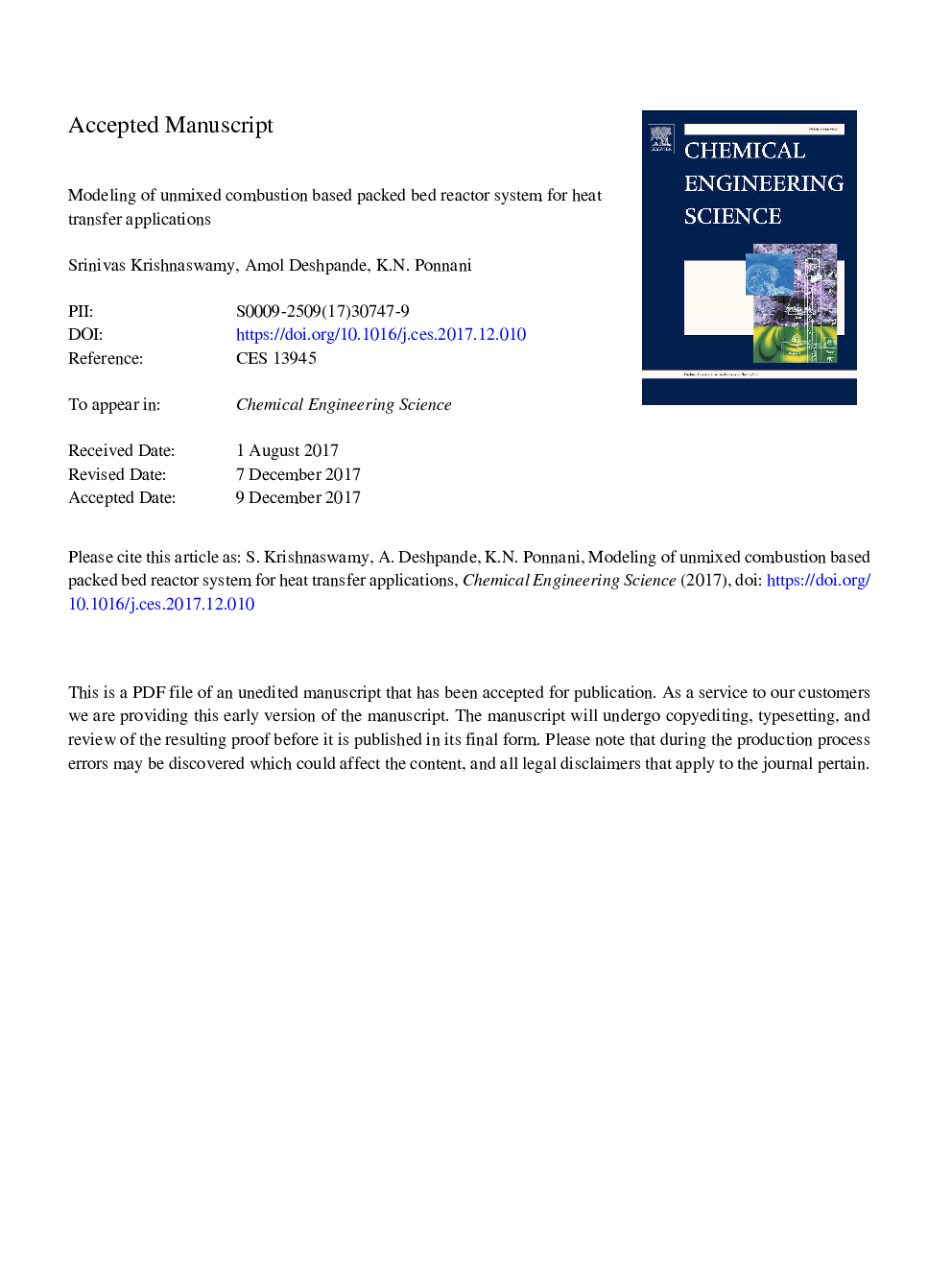| Article ID | Journal | Published Year | Pages | File Type |
|---|---|---|---|---|
| 6588699 | Chemical Engineering Science | 2018 | 33 Pages |
Abstract
Unmixed Combustion (UMC), a novel variant of combustion, occurs when air and fuel alternately pass over an Oxygen Storage and Release Material (OSRM), usually metal/metal oxides, that undergoes oxidation and reduction reactions. The energy released during these reactions can potentially be utilized for various heat transfer applications. In this regard, a dynamic 2-D pseudo-homogeneous model has been developed for an UMC based annular packed bed reactor incorporating the phenomena of heat transfer across a surface to a representative coolant, i.e. air. A CFD software COMSOL Multiphysics⢠was used for model implementation and simulation. Cu/CuO on alumina was chosen as a representative OSRM, while zero air and methane (diluted with nitrogen) were used as reactive gases in the simulations. For prescribed operating conditions, the model predicts temperature profiles in the bed and total heat transfer. Model results for one cycle comprising of oxidation and reduction at 1.25â¯kg of OSRM loading and an operating temperature range of 823.15-973.15â¯K, were compared with those obtained from experimental data. Good agreement to within ±2% for radial heat transfer to coolant and ±9% for bed temperature profiles was found. The effect of varying reactive gas and coolant flowrate on the radial heat transfer was also simulated. This sensitivity analysis helped identify the limits of operating variables for optimal performance and confirm theoretical viability of operation. The results validate the use of a pseudo-homogeneous model in predicting the behaviour of dynamically operated UMC systems under the operating conditions in which the present study was carried out.
Keywords
Related Topics
Physical Sciences and Engineering
Chemical Engineering
Chemical Engineering (General)
Authors
Srinivas Krishnaswamy, Amol Deshpande, K.N. Ponnani,
